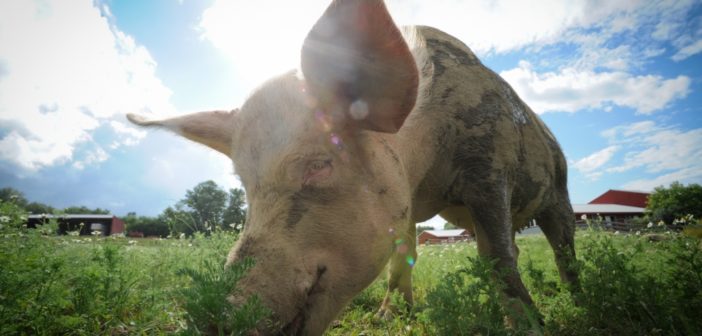Penn State’s Milton S. Hershey Medical Center has ended the use of live animals for teaching emergency medicine residents, two months after national nonprofit the Physicians Committee for Responsible Medicine filed a federal complaint over the practice. Previously, Penn State used live pigs to teach invasive procedures; the training sessions were lethal.
Dr. Craig Hillemeier, dean of Penn State College of Medicine and CEO of Penn State Health, shared in an e-mail to Physicians Committee director of academic affairs John Pippin, M.D., that, in December, he had asked leaders at the medical center and college of medicine to review the available methods for emergency medicine residency training. Dr. Hillemeier stated, “As a result of this review, there are no plans to use live pigs in training our emergency medicine residents in the future.”
“Penn State has made a commendable change,” says Dr. Pippin. “Human-relevant methods are a win-win when it comes to training skilled physicians and sparing animal lives.”
According to an ongoing Physicians Committee survey of programs in the United States and Canada, 95 percent of programs (253 out of 267) forgo live animal use. Instead of animals, medical simulators and human cadavers are widely used. The simulators replicate human anatomy and physiology and can include lifelike skin, fat, and muscle.
The Physicians Committee, which has more than 12,000 doctor members, including 538 in Pennsylvania, is now withdrawing the federal complaint it had filed against Penn State in December. The complaint cited inadequate oversight of the training protocol by the medical center’s animal care and use committee and violations of the federal Animal Welfare Act, which requires “that a principal investigator—including course instructors—consider alternatives to procedures that may cause more than momentary or slight pain or distress to any animal used for research purposes.”
Featured image: Honey the pig at her home at New York’s Farm Sanctuary. Image credit Jo-Anne McArthur / We Animals.





